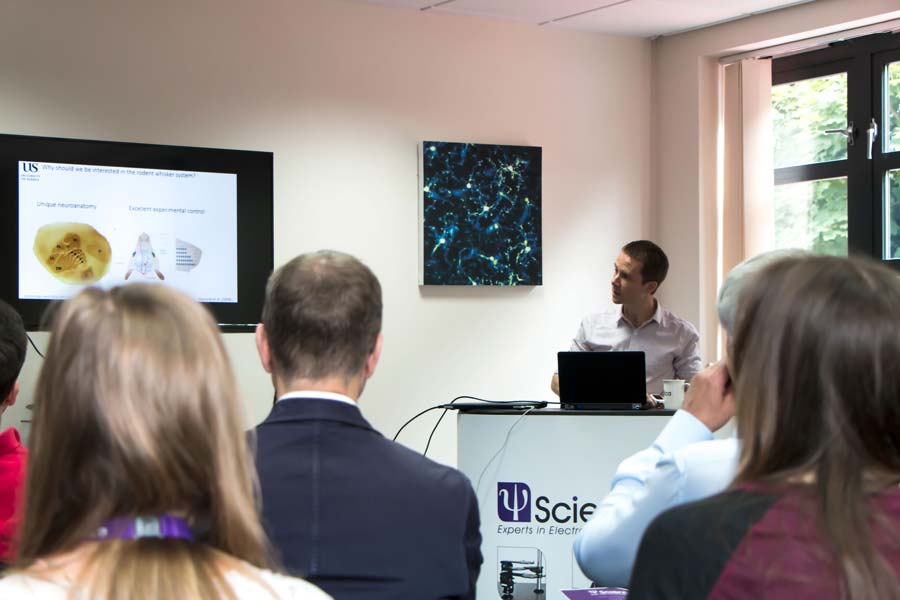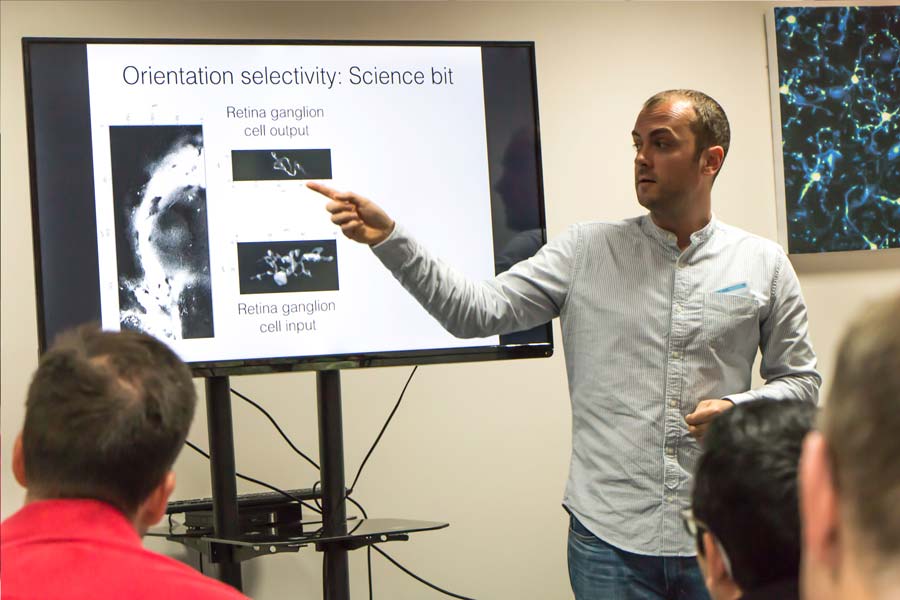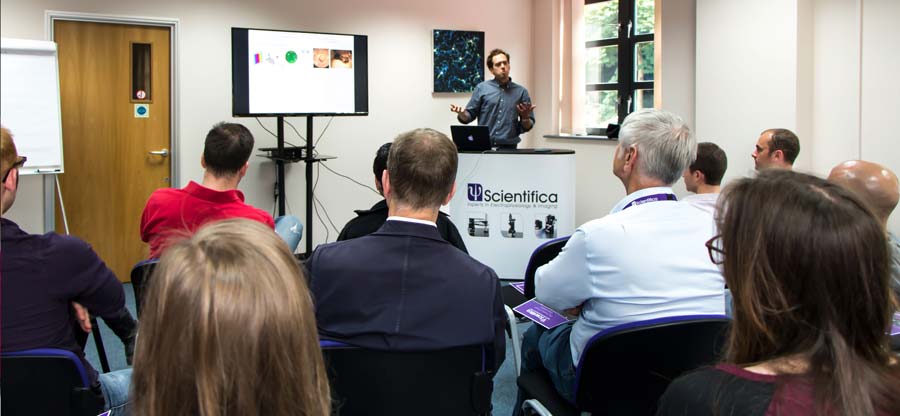
Sussex University Lecture Morning held at Scientifica Head Office
On Friday 8 July, researchers from Sussex University gave three fun and fascinating lectures on their current neuroscience research at Scientifica’s offices in Uckfield, East Sussex.
Exploring the neural code for touch

The first speaker was Dr Michael Bale, whose talk was titled, “Exploring the neural code for touch using electrophysiology and calcium imaging.”
In his talk Dr Bale discussed how making sense of the world requires integration of sensory patterns and sequences over time. For example, recognising a song or deciphering speech requires the identification and classification of a stream of vibrations.
Interestingly, humans automatically learn unpredictable noise patterns even when not explicitly asked. Despite the central importance of sequence selectivity to sensory function, little is known about its substrates in the brain.
Timing based codes are prevalent throughout the whisker system of mice. In primary afferents, the true precision of neuronal firing has been elusive. Using high-speed ecologically relevant stimuli and high-fidelity electrophysiology (sampling rates up to 500 kHz), Dr Bale has estimated the jitter of neural responses to be on the microsecond timescale.
To investigate the behavioural relevance of timing in tactile sensation I have developed a whisker-based sequence discrimination task. The lab now focusses on identifying the brain regions and neural circuits involved in tactile discrimination.
Measuring and controlling neural circuits in early sensory systems

Next up was Dr Jamie Johnston whose lecture discussed, “Measuring and controlling neural circuits in early sensory systems.”
Dr Johnston detailed his interests in understanding neural circuits and, using two example projects, illustrated the approaches that he uses to tackle these questions.
The first examines how the retina processes moving objects and required measurements with a high temporal resolution.
The second project scrutinises how components within the retinal circuit respond to the orientation of stimuli and explore, with the help of imaging, how these components are wired together.
Dr Johnston detailed the choice of techniques and the technical requirements that had to be met to perform the experiments.
Minimise cortical variability in the visual cortex

Finally, Dr Tristan Heintz gave a presentation on “How to minimise cortical variability in the visual cortex by controlling cortical states.”
Neurons in the primary visual cortex (V1) integrate from two main sources of driving inputs: the feedforward inputs (bottom-up) originating from the eyes and the feedback inputs (top-down) originating from higher order visual areas. The bottom-up drives faithfully represent the sensory environment whereas top-down inputs provide prediction signals based on internal models of the world.
The interaction between these two drives defines the activity of neurons in V1. Thus neurons in Layer 2/3 of V1 are driven by bottom-up inputs in naive conditions, but by top-down inputs when a previously learnt stimulus is presented.
Additionally, recent evidence shows that the bottom-up drive is strongly modulated by the behavioural state of the animal, such as locomotion, arousal and attention, but that some of these modulatory signals are ineffective when top-down inputs dominate.
Therefore, to study the balance between bottom-up and top-down inputs, or to simply try to understand how cells in the primary visual cortex integrate the information coming from the eyes, it is important to closely monitor and control the effects of the modulatory inputs induced by varying cortical states.
Dr Heintz explained the consequences of the modulatory signals caused by locomotion and arousal and described the strategies used to monitor them closely during an experiment. He went on to illustrate how his lab tries to minimise their effect to reduce the variability in the responses we observe when presenting simple visual stimuli.
Scientifica would like to thank all of the speakers for their contributions. Find out more about Dr Michael Bale, Dr Jamie Johnston and Dr Tristan Heintz research on the Sussex Neuroscience website.

)